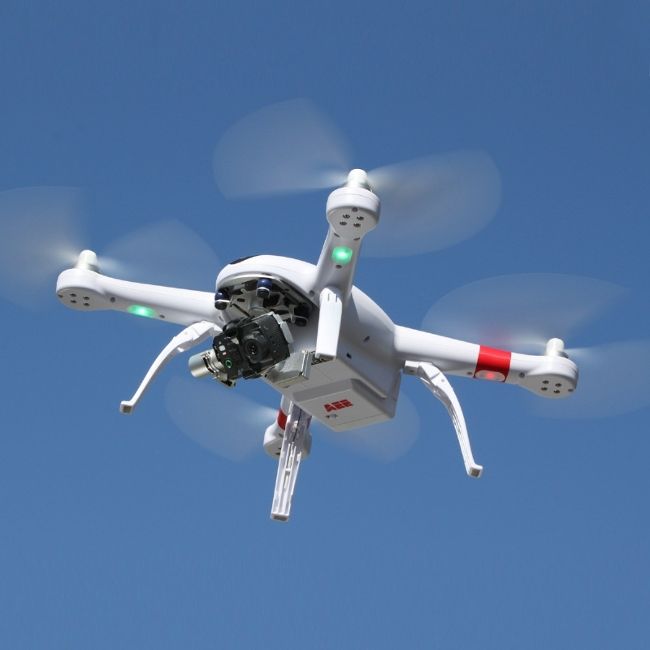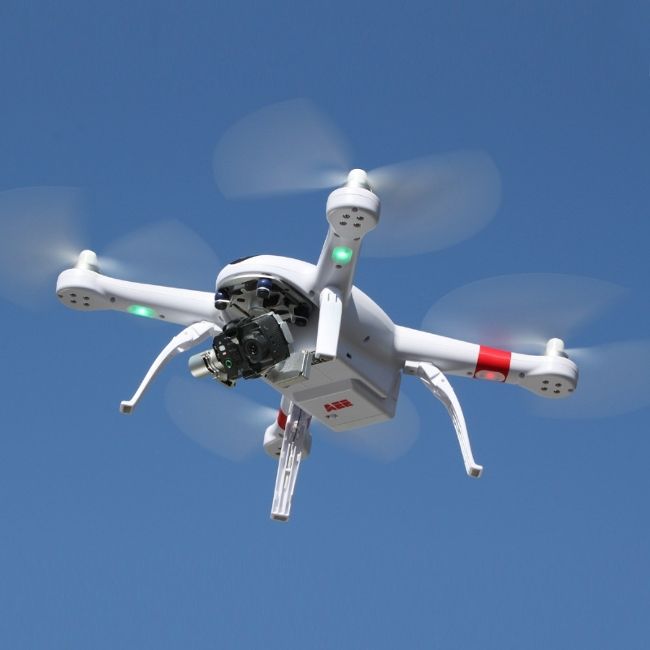
In this column we have often dealt with business technology for your home-building and remodeling company–technology such as estimating and accounting software. But since we’re on the eve of a holiday, I thought it more fun to help you find a “business purpose” for a purchase you may be considering–just because it looks like a lot of fun: a drone! Let’s explore how you might use one in your business and then write-off the holiday gift on April 15th 2016.
Drones in the Heartland
In the United States, widespread use of drones awaits final FAA regulations due in mid to late 2016. But small, hobby drones of exceptional flight capability and high-definition photography are readily available and thousands are in use every day for both hobby and light commercial use, despite regulatory ambiguity.
Imagine using one to scope out a roof job, inspect a chimney, or to check on your sider, or painter’s work in those spots hard to inspect from ground level.
In Lincoln, Neb., Luke Hansen, of White Castle Roofing, uses a hobby drone to obtain a birds-eye view for roofing estimates, claiming the drone means an easier, safer job. A lot quicker, too. On one housing complex Hansen says he shaved four hours off a five-hour estimate by flying over the roofing project rather than lugging ladders from slope to slope. If you click on the link to Hansen’s website, you’ll see he uses drone video as a promotiional tool as well.
To give you a sense of how accurate drone imagery has become, an Unmanned Aerial Vehicle (UAV) flying at 200 ft. can easily provide images of an area as small as 3/4 in. This allows you to inspect detailed workmanship, or troubleshoot construction defects on an entire structure without climbing at all.
Allstate has been conducting research with the Property Drone Consortium to evaluate the potential of drones to be used as remote insurance inspectors, able to inspect damaged roofs, collapsed buildings, and difficult-to-reach places immediately after a major storm.
While in the United States, we are still waiting for the FAA to allow widespread use of drones, overseas drones are becoming as commonplace as cell phones. Contractors are using them not only to monitor structures, but to monitor workers. Laborers at a construction site in Australia were spied on slaking off by a drone used as a means of recording daily productivity on building sites. The boss quietly monitored his building site using a drone for about two hours and recorded the “poor behavior” of his workers, according to the Daily Mail.
The sophisticated, long-range and high-flying drones available overseas today will remain out of reach until FAA approval, but you can purchase inexpensive, low-flying drones that take stable, very high-definition video and photos. A good one, such as the AEE AP11+ (a drone with 4K camera and touchscreen) sells for about $800, or a semiprofessional drone, such as the vaunted Phantom 3 from DJI, can be had before Christmas for about $1300. Industrial quality drones, such as the AEE F50 can range from $25,000-to-$50,000, but still–it’s a lot less than a helicopter.
Drones are relatively inexpensive and very useful. They are the emerging, cool-tools of today, and you should learn about them to keep up with evolving technology as they become more widely available. Or pay someone else to do the flying for you.
Subcontract the Flying
Aerial photography and videography remain the primary uses from drones in architecture and construction. If you’re a spec builder, just picture selling a home, and instead of posting five-to-ten still snapshots on your realtor’s website, you have a three-minute video of a flyover showing all of the elevations, and the yard, the driveway, the neighborhood, the golf course and school, and of course that brand new roof–all for about $400 to $1000 for aerial videography and editing.
Since many companies don’t have the expertise to own and pilot drones, companies such as Atlanta-based FlyWorx have appeared to offer aerial video and imaging services. Working with third-party UAV pilot offers an efficient option if you want to obtain video and data, but don’t want to invest in a drone and learning to fly it.
Surveys and topography have always been an expensive affair, especially on large or complex sites. But now drones, such as those developed by Trimble, offer a powerful unmanned alternative that can do large tracts and complex tracts, such as hillsides and coastlines more accurately and for a whole lot less than the traditional story pole and theodolite method.
Drone photography, videos, and inspections will not remain out of reach for small builders. In addition to the FAA’s recent exemptions for insurance and civil-engineering firms, the agency also approved the start-up Fly4Me to begin operating its “Uber for Drones” program. The platform helps local drone pilots connect with companies or individuals that need a temporary drone for architectural imaging, mapping, and inspections.
Fine Homebuilding Recommended Products
Fine Homebuilding receives a commission for items purchased through links on this site, including Amazon Associates and other affiliate advertising programs.

Handy Heat Gun

Affordable IR Camera

8067 All-Weather Flashing Tape





























View Comments
Not sure if the idea is worth it. At least not until they start being produced for the masses(lowering the cost). But it's a great approach and I am sure I might even witness day where every roofer has one of those in my life span. Great column once again, guys!
Irvine
Your article is very misleading. You make it sound like any business can get a drone and use it. Please read FAA regulations regarding commercial use. You must obtain a 333 exemption if you use a drone in any way in which you receive compensation. If you are a roofer and you it without a 333 exemption you are breaking the law because you are compensated from it's use. Even a farmer can not use one for his own land because he makes money from the land. Real estate agencies can not use a drone without an exemption. Article like this is what gets people in trouble. Users who do not have an exemption can be subject to a $10,000 fine and confiscation of their aerial vehicle.
AeriesVideo'
When I see the line, "While in the United States, we are still waiting for the FAA to allow widespread use of drones..." and "Drone photography, videos, and inspections will not remain out of reach for small builders. In addition to the FAA's recent exemptions for insurance and civil-engineering firms..."
I don't think he's making it sound like any business can get a drone and use it. You kind of get the idea that the FAA is part of the deal.
Any wise business owner will check out the laws before taking a risk. They are used to thousands of government regulations so they are pretty sure the gov is not going to let this opportunity pass them by.
Unfortunately most businesses do not look at FAA regulations and either use them or hire someone to video without checking for a 333 Exemption. In my area there are real estate agencies, farmers and people taping weddings illegally who figure they won't get caught and I'm sure none of them have the proper insurance. There are about 2000 current exemptions across the country which isn't a lot. I have spent a great deal of time and money going to school for UAV certification and buying the latest technology. I am not going to let someone who goes to Best Buy and gets a drone who doesn't have a clue and think they are going to start making big dollars. I will turn them in to the FAA and make them do it right if they are going to charge for it.
As a roofer, http://erdreroofing.com/ , we will be staying current on this idea. Really cool idea in regards to estimating.